10333 E. 21st N. #406 | Wichita, KS 67206 Phone: 316-630-9944
Blog
Our Blog

12 Feb, 2024
Are you or someone you know an “exercise junkie?” Do you worry about your weight, restrict your food and fluid intake, diet constantly or exercise excessively to avoid gaining weight? Has your menstrual cycle been disrupted, is it erratic or has it stopped altogether? Do you feel stressed or depressed? Have you resorted to taking diet pills and laxatives? Do you ever force yourself to vomit after eating? These are a few of the questions health professionals may ask if they suspect someone may be a victim of the female athlete triad, which includes disordered eating, amenorrhea and osteoporosis. Women and girls with this condition exhibit signs of pathogenic weight control and are at high risk for many medical problems. Eating Disorders Eating disorders span the spectrum from restrictive eating or avoiding certain foods to anorexia or bulimia. Disordered eating results in a negative energy balance, where more calories are being used than consumed. An electrolyte imbalance can occur, which can lead to dehydration, decreased thermal regulation, cardiovascular problems, poor healing and even sudden death. Most people have heard of anorexia nervosa, which is an eating disorder characterized by an intense fear of fatness, an abnormal body image, absent or disrupted periods and weight loss to less than 85 percent of normal. There may also be associated signs like low blood pressure, slow heart rate, dry skin and nails, hair loss or thinning and excessive fine hair on the sides of the face and arms. Bulimia nervosa is a related eating disorder characterized by recurrent bingeing and purging, two times a week or more. Associated signs may include enlarged salivary glands, periodontal disease, conjunctival bleeding and scars on the back of the hand from repetitive, forced vomiting. Statistics show that about one in every 100 women binges and purges to lose weight. Amenorrhea Menstrual dysfunction occurs in women and girls with disordered eating. Primary amenorrhea is a condition in which girls do not start their periods by age 16 when the usual sex characteristics are present or by age 14, if no other sex characteristics are present. Secondary amenorrhea is a condition in which the period is absent or irregular and is diagnosed in previously menstruating women when there is an absence of three consecutive periods, or less than two cycles per year. Athletic amenorrhea is a condition that falls under this secondary category and occurs when there is a combination of caloric restriction, excessive exercise, emotional stress and low body fat. Health Consequences Health consequences that may result from eating disorders and amenorrhea include osteoporosis, stress fractures, scoliosis, infertility and cardiovascular disease. Osteoporosis, in this instance, is a premature loss of bone in premenopausal women, an inadequate formation of bone or a combination of both. People at high risk of osteoporosis are likely to include women of slender build, those with low calcium intake, those with a family history and those of caucasian and Asian heritage. Female Athlete Triad When the eating disorders, amenorrhea and osteoporosis exist together, it may be diagnosed as the female athlete triad, which occurs most frequently in athletic women but can also affect non-athletic women and girls. The true prevalence is not known because it is often unreported or underdiagnosed. Prevention and treatment should include a multidisciplinary approach by physicians, dietitians, psychologists, physical therapists, nurses, coaches, athletic trainers, dentists and family. Appropriate history and education are the keys to recognition of the problem and prevention. Counseling and family support may help in determining the underlying cause, promoting a healthy body image, promoting healthy eating habits and addressing issues, such as stress, anxiety and depression. Proper exercise should be in an appropriate balance with the fuel consumed to achieve and maintain a healthy body and lifestyle. For more information regarding diet, nutrition, and exercise, please consult your physician, a nutritionist and a women’s health physical therapist. Ann Sundgren, PT Palmer Physical Therapy for Women
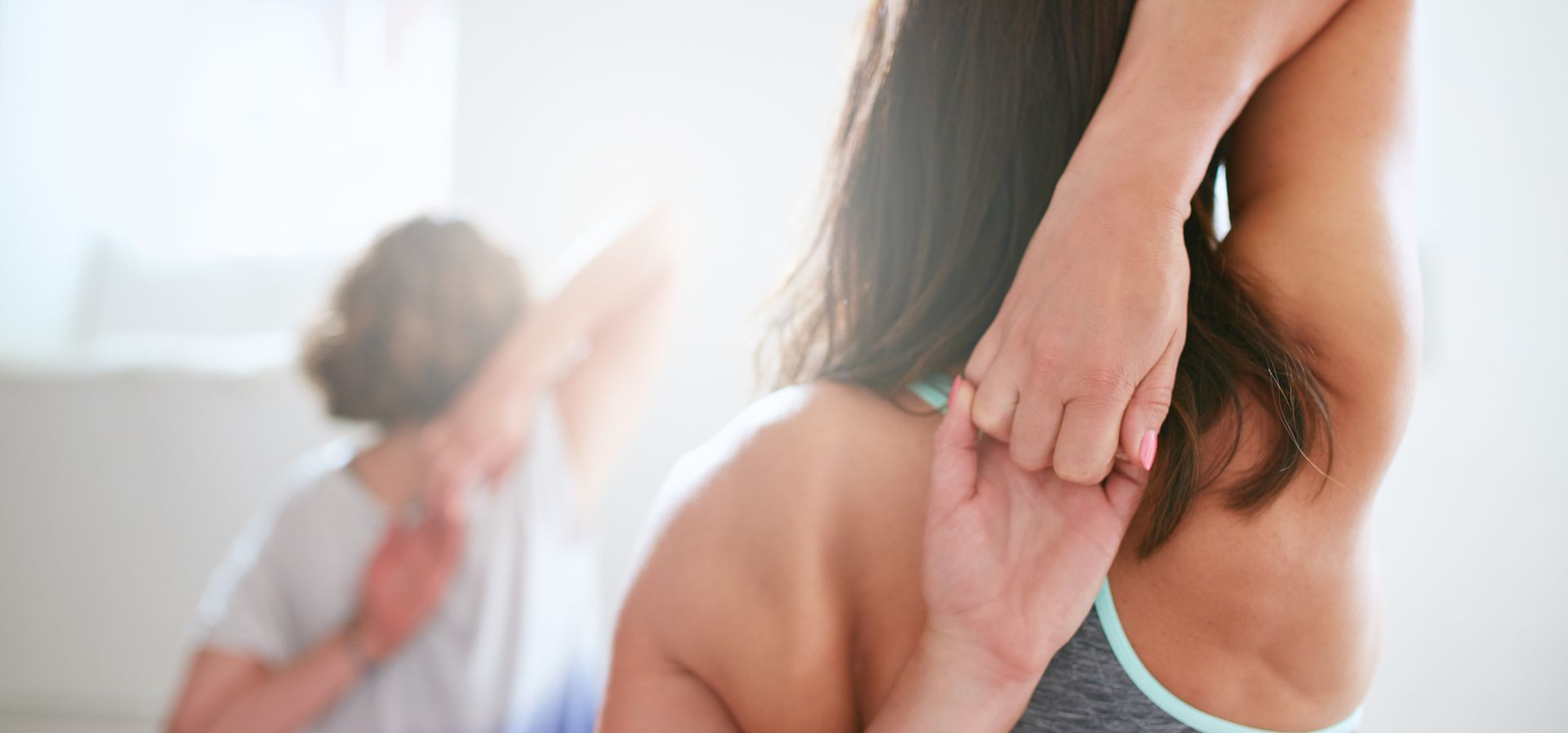
12 Feb, 2024
"After cancer diagnosis, many patients anticipate a treatment regimen that might include surgery, chemotherapy, targeted therapy, immunotherapy or radiation. But there's another type of treatment that can benefit people with cancer, and it's one that they don't always get - physical therapy. Physical therapy can help address side effects of cancer or its treatments, including pain, weakness, body changes and fatigue." "Many people being treated for cancer experience severe fatigue, which often tops lists of common side effects of both chemotherapy and radiation. Although it might seem counterintuitive, physical therapy can play a vital role in fighting fatigue." "You don't have to rehabilitate what you don't lose. Waiting for patients to lose function, and then give it back to them is not best practice. Our job is to keep you happy, healthy, and moving." "Patients often worry that they are not well enough for physical therapy, but people who try physical therapy don't get as sick, don't have as much pain, and tolerate chemotherapy and radiation better." From the winter 2018 edition of Cure magazine. Please follow the link for more information about the benefits of physical therapy during cancer treatment. https://www.curetoday.com/publications/cure/2018/winter-2018/lets-get-physical Research shows that physical activity during and/or after cancer treatment can help you minimize and overcome the effects of cancer treatment. At Palmer Physical Therapy for Women, our therapists are trained in oncology rehabilitation and will evaluate your pain, neuropathy, range of motion, tissue restriction, strength, endurance and balance. An individualized plan of care and exercise program will help you address any deficits and achieve your specific needs and goals. We are ready to help you get your quality of life back! Susan Palmer, PT
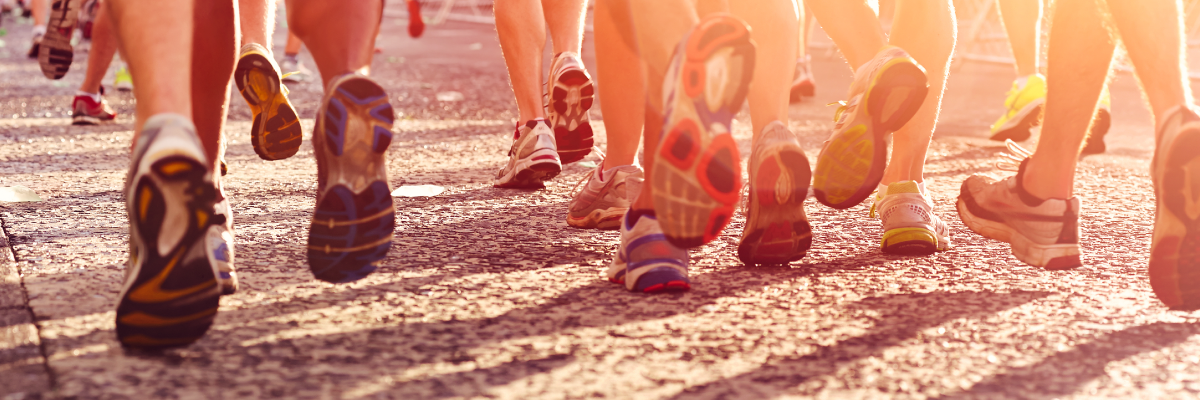
12 Feb, 2024
Nordic Walking—What Is This New Craze? Popular in Europe for many years, Nordic Walking, also known as Urban Poling, is recently becoming an exciting exercise option here in the United States. To understand Nordic Walking better, envision cross-country skiing without the skis. There are many great benefits from Nordic Walking. Namely, there is 80% more muscle activation than traditional walking, with up to a 40% increase in calorie burning. Nordic Walking improves posture, gait pattern, and balance, while increasing core and upper body strength. Using the poles with walking significantly decreases stress on the back, hips, knees, ankles and feet, enabling those with painful or chronic conditions to tolerate and enjoy more physical activity. Working out with the Nordic poles helps to increase overall strength and endurance, which can carry over to other daily activities and enhance the quality of life. Weightbearing and resistance activity with the upper body helps prevent bone loss due to osteopenia or osteoporosis as well. At Palmer Physical Therapy for Women, we are utilizing the poles as part of our individualized rehab programs for those with balance or falling issues, for those with spine or lower extremity pain or dysfunction, or for those with postural problems. There are many great exercises that utilize the poles to assist with stretching, strengthening or balance. We have also been promoting Nordic Walking to our clients and to other community groups as a new, unique form of fitness activity. Especially during the recent COVID-19 pandemic, Nordic Walking can easily be done outdoors for social distancing, nearly anytime, anywhere. It requires little equipment, with minimal expense. Once the proper gait pattern is achieved on level surfaces, Nordic Walkers can challenge themselves on uneven ground, hills, or inclines. Palmer Physical Therapy for Women is now offering classes for an introduction to Nordic Walking. Participants learn a comprehensive home exercise program using the poles to help with stretching, strengthening and balance. Physical therapists adjust and fit the poles properly to the individual, and educate them about proper gait pattern, posture correction and control. Some of the comments from our recent classes: “I started walking with Nordic poles July 18, so have been walking with them for a month. Previously, my walking was a chore and just something I felt I had to do for health reasons, not so much because I enjoyed it. Now, every morning, I am eager to exercise with the poles. I also started doing the recommended stretches, balance and strengthening exercises using the poles. I feel like I have settled into an exercise program that I totally enjoy! Even after only one month, I sense that I am more aware of having correct posture. I can tell from my Apple Watch app that I am burning more calories with the poles. I initially thought I would be embarrassed walking in my neighborhood, but I mostly get smiles, thumbs up, and inquiries about this form of exercise. Now I like being the unique exerciser! I would highly recommend walking with Nordic poles!” Jan Dav is Future ongoing fitness classes will be offered for those interested in advancing with more comprehensive exercise and conditioning. For further information about class times, please call Palmer Physical Therapy for Women, 316-630-9944. Our office is located at 10333 E 21 st ST N. #406, Wichita, KS 67206. We look forward to working with you!
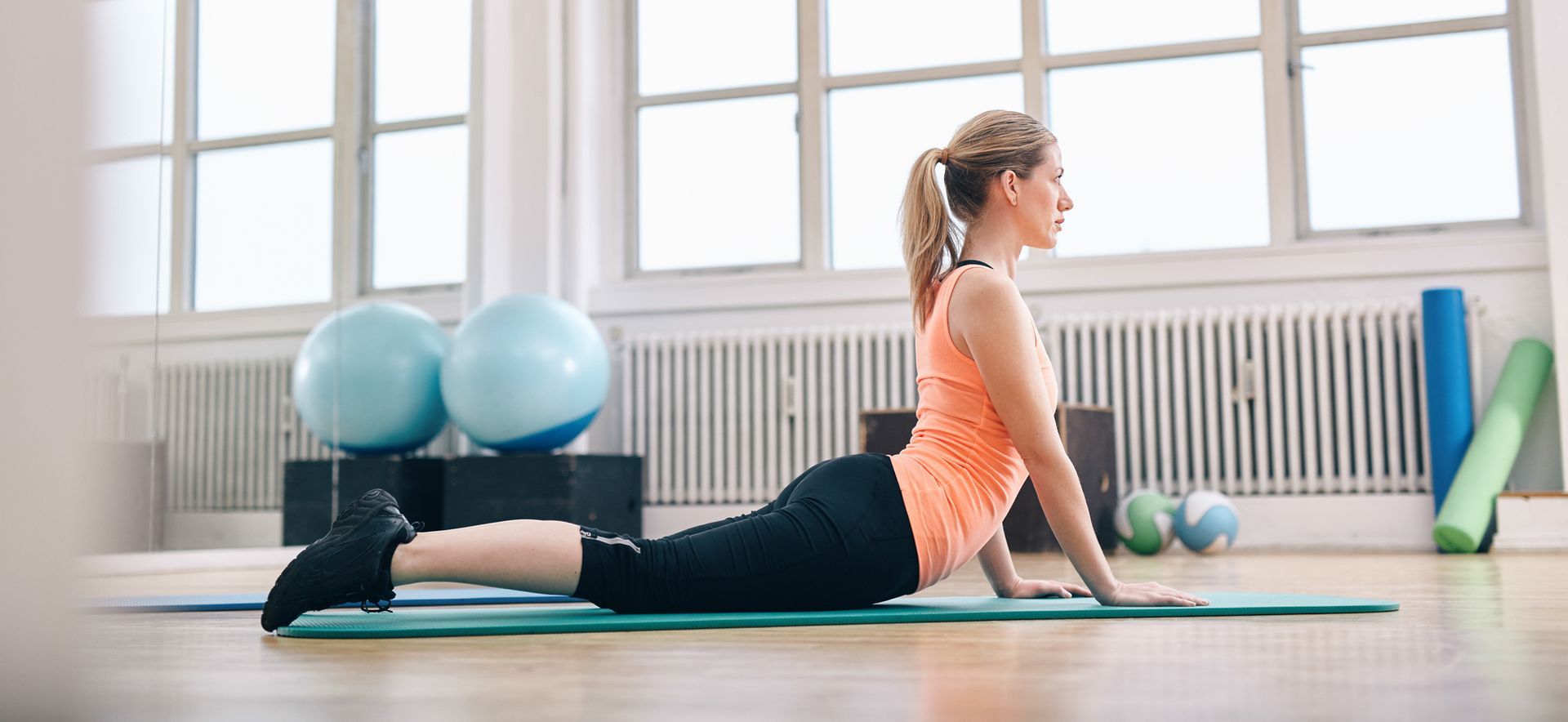
12 Feb, 2024
For years, women have suffered in silence from pelvic pain, often not even discussing the problem with their physician. Others visit numerous health care practitioners desperately seeking answers about the source of their pain. The pain they experience can affect their ability to work and perform daily living activities. It can also affect relationships with spouses or significant others. Many women avoid sexual relations because of pain. Worse yet, many feel that no one can help them. Chronic pelvic pain can present itself in numerous ways. Symptoms may include: Lower abdominal pain Painful sexual intercourse Itching or burning around the vagina or pelvic floor (may have diagnoses of frequent yeast infections) Pain in the bladder or rectal areas (may have diagnosis of interstitial cystitis) Painful clitoral area and/or inability to achieve orgasm Lower back pain Sometimes these symptoms can be related to endometriosis, ovarian cysts, or other medical problems. Symptoms may be as a result of a yeast infection, but this diagnosis can be inaccurate. In other instances, the woman has undergone numerous diagnostic procedures including laparoscopy, and the source of the pain remains unknown. That’s where a relatively new area of physical therapy can help. A physical therapist specially trained in women’s health can assist with pain relief and return a woman to a more normal level of functioning, whether it be normal bowel and bladder function or pain-free sexual intercourse. A women’s health physical therapist can evaluate the pelvic area from a muscular, skeletal and nerve standpoint. The physical therapist may find that muscles are in spasm, the spine or pelvis may be positioned incorrectly, and nerves may be irritated or not functioning correctly which all result in pain and dysfunction. I very frequently see women in my clinic who have complaints of painful sexual intercourse. This can be devastating to a relationship. The woman often feels as if it’s her fault, in some way, that she experiences pain with sex. Her partner doesn’t understand the problem and becomes frustrated. This can lead to diminished sexual interest or avoidance altogether. However, this problem can be treated very effectively. The spine is evaluated for abnormalities, irritated nerves are calmed and muscles are gently stretched back to normal lengths. After the physical problems are cared for, the couple may need additional help from a behavioral therapist specializing in sex therapy in order to complete the healing. A women’s health physical therapist can also help a women who has a diagnosis of interstitial cystitis. Interstitial cystitis can include a variety of symptoms and the cause is unknown. Women with this diagnosis have inflamed bladder walls, bladder or pelvic pain and pressure which can be intense, and the need to urinate very frequently, often with urgency. These symptoms can worsen during their menstrual cycle and most complain of pain with sexual intercourse. Medications are not very effective in controlling this problem. Again, physical therapy is efficacious in fighting these symptoms. Evaluation of women with this diagnosis can reveal long-term lower back pain which is not always severe in nature but causes nerve irritation. The lower back pain can be treated, which decreases the nerve irritation. Other elements of treatment include bladder and pelvic floor muscle re-training. The important thing to remember is that chronic pelvic pain and its variety of symptoms can be effectively treated with physical therapy. Recent studies show that a manual physical therapist that specializes in pelvic floor dysfunction can relieve discomfort, and improve muscle and bowel and bladder function. Women don’t have to live with pain nor is it “all in your head” when you experience pain with sexual intercourse. There are physical reasons for your pain! If you are experiencing symptoms of chronic pelvic pain, I encourage you to consult with a women’s health physical therapist to evaluate your needs and move towards recovery. Pam Palmer PT Women’s Health Physical Therapist Palmer Physical Therapy for Women
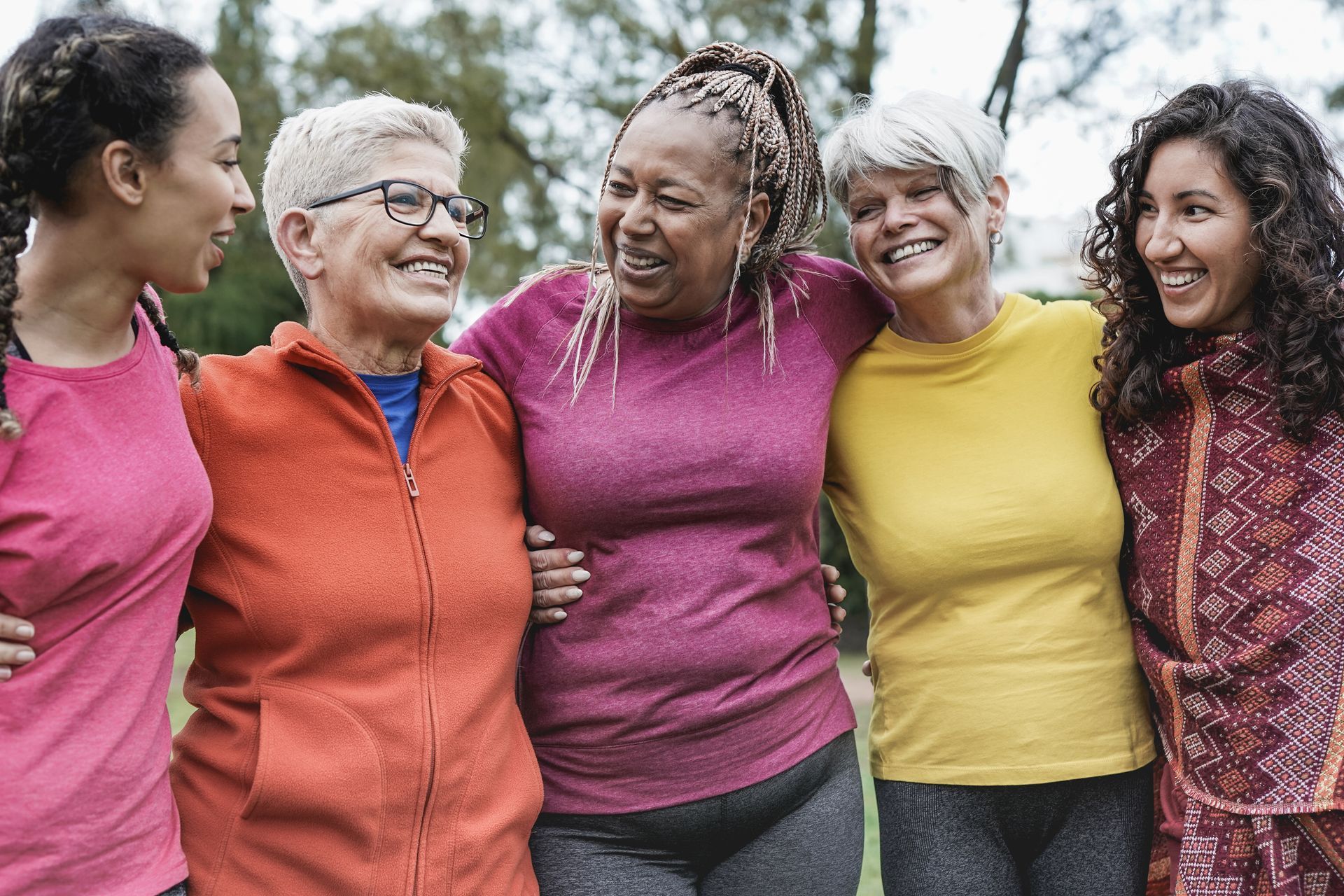
12 Feb, 2024
Breast cancer statistics are alarming. The rate of new cases of breast cancer increases by just more than 1 percent per year since the 1940s. In 2005, an estimated 211,240 new cases of invasive breast cancer were diagnosed in women. One in eight women either has or will develop breast cancer in her lifetime. Despite those statistics, there is good news: Strides have been made in the detection and treatment of breast cancer. Even though new cases increase yearly, mortality rates have decreased significantly. If detected early, the five-year survival rate is 95 percent. There are more than 2 million breast cancer survivors in the United States today. Discovering you or someone you love has breast cancer can be a terrifying experience, but new hope comes from the expanding array of life saving cancer treatments tailored to fight the complexity of each individual cancer. The ideal treatment plan is different for each woman depending on several factors, including the stage of the cancer, tumor size, lymph node involvement and hormonal (menopausal) status. Treatment plans usually consist of a combination of surgery, radiation, hormonal therapy and chemotherapy. Once the initial cancer treatment is over, the breast cancer survivor must take steps to ensure her healthiest future and highest quality of life possible. Seeking regular medical care is of utmost importance. Being aware of possible post-treatment complications and intervening early if complications arise are also important steps in this process. Post-treatment complications may include: Pain at the incision site, shoulder girdle and neck caused by tension along the incision with movement of the arm on the involved side or muscle spasms. Additional issues arise when the woman limits the use of her arm out of fear of pain, such as loss of motion in the shoulder and increased risk of lymphedema. Lymphedema is a chronic condition that is characterized by swelling of a body part. The condition occurs when lymphatic fluid can no longer travel effectively through a segment of the lymphatic system and instead accumulates in the surrounding tissues causing swelling. It occurs most often when lymph nodes are removed to determine how far the breast cancer has spread. An estimated 30-40 percent of breast cancer survivors will develop lymphedema following their surgery, though it can take years to develop. Lymphedema can lead to difficulty using the involved arm and decreased body image. A good way to monitor this gradual swelling is to take periodic circumference measurements of the arm on the involved side. You may also notice it in the fit of watches, jewelry or clothing. Scar tissue formation can restrict motion, cause pain and increase the risk of lymphedema. It may also cause deformity of the breast and surrounding tissue and decreased body image. Women develop faulty postures , or protective postures, such as rounded shoulders, to avoid pain or tightness of the skin. Over time, poor posture can lead to poor shoulder movement, upper back, neck and low back pain. Faulty postures can also develop following reconstruction procedures that use abdominal or other trunk muscles to reconstruct the removed breast tissue, which can lead to headaches and spinal problems. Weakness , muscle imbalance and general deconditioning from lack of activity. Osteoporosis can be caused by chemotherapy and lead to early menopause in premenopausal patients, accelerating bone loss. The initial phase following a diagnosis of breast cancer is overwhelming and rightfully consumed with the fight to live. Many complications can be overlooked as minor issues, but they can become major obstacles in the performance of everyday activities, if not addressed. Complications can lead to loss of movement or strength in the arm, problems with scar healing and difficulty performing usual activities of daily living such as dressing, toileting, reaching overhead or behind the back, bed mobility, driving, lifting and other functional activities. This can limit a woman’s ability to return to work, social activities and exercise and can impact her overall quality of life. Early intervention can help breast cancer survivors reduce or avoid these complications. There are several interventions that can be incorporated into an at-home exercise program. Breast cancer treatment interventions can include: Progressive range of motion and stretching exercises Scar tissue massage Posture education and correction Manual therapy and modalities to reduce pain, inflammation and swelling Strengthening exercises Palmer Physical Therapy for Women female physical therapists with expertise in treating women following cancer treatment and surgery can customize an exercise program to each woman’s needs and alleviate some of the fears she may have regarding movement or returning to activity. Women are surviving breast cancer! Being educated about treatment options and possible complications are key to helping each breast cancer survivor preserve her functional quality of life and optimize her overall health. Susan Palmer, PT
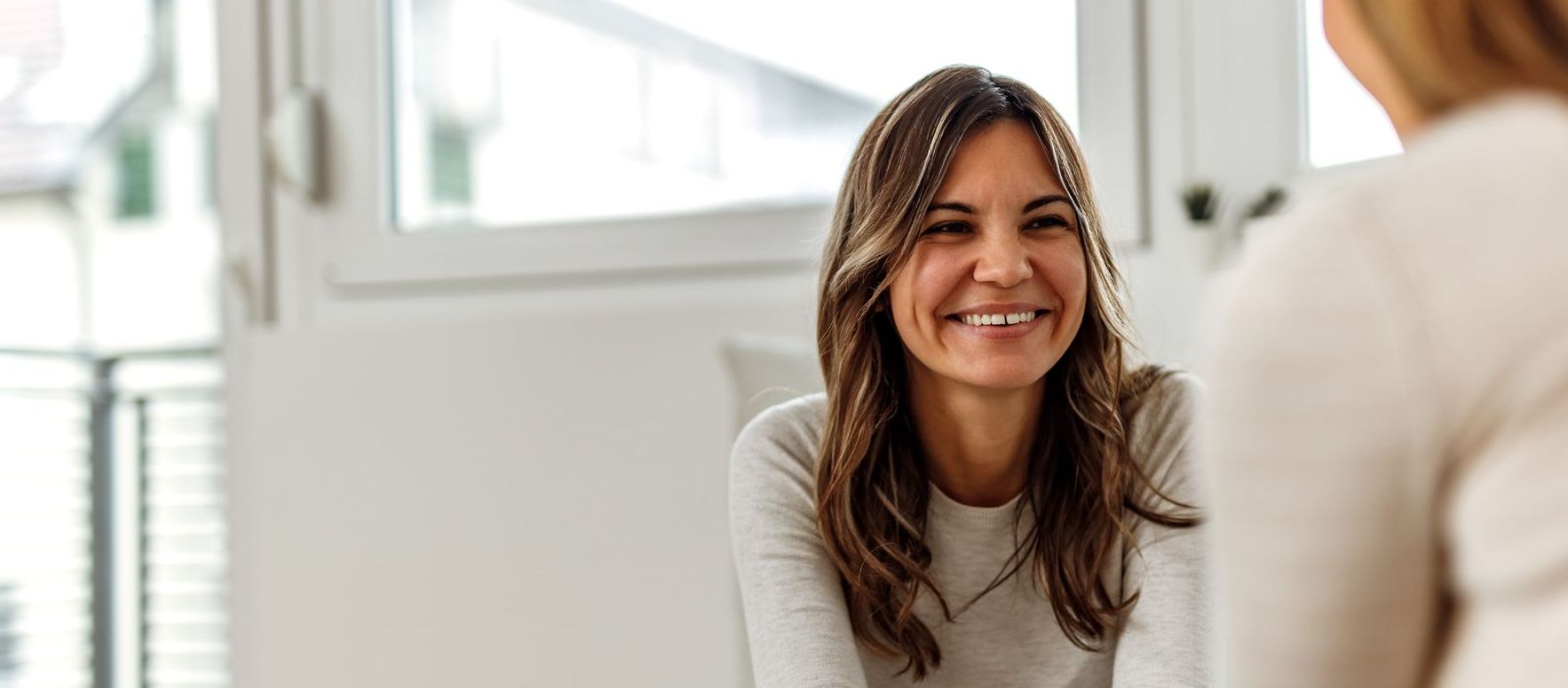
12 Feb, 2024
Many women suffer in silence or are afraid or embarrassed to talk about such a personal issue – chronic pelvic pain, including painful intercourse and interstitial cystitis. Other women visit many healthcare providers seeking answers about the source of their pain, and an estimated 15 percent of women aged 18-50 experience chronic pelvic pain, which can vary in intensity and increase in severity during menstruation. It can also affect a woman’s ability to work and perform activities of daily living, including walking, sitting, bowel movements, sexual intercourse and the use of tampons as well as impact her relationships with her spouse or significant other as many women avoid sexual intercourse because of the pain. Chronic pelvic pain is common, and it can be treated effectively with physical therapy. Chronic pelvic pain can present itself in numerous ways: Lower abdominal pain Painful intercourse (dyspareunia) Itching or burning around the vagina or pelvic floor (may have diagnoses of frequent yeast infections) Pain in the bladder or rectal areas (may have diagnosis of interstitial cystitis) Painful clitoral area and/or inability to achieve orgasm Low back pain Other names and related diagnoses can include: Dyspareunia Vaginismus Vulvodynia Vulvar Vestibulitis Interstitial Cystitis Pudendal Neuralgia Pelvic Inflammatory Disease Coccydynia Perineal pain Sometimes, these symptoms can be related to endometriosis, ovarian cysts, yeast infections or other medical problems, but in some instances, the woman has undergone numerous diagnostic procedures including laparoscopy, and the source of the pain remains unknown. This is where a relatively new specialty within physical therapy can help with pain relief and return a woman to a more normal level of functioning, whether that’s normal bowel and bladder function or pain-free sexual intercourse. Pam Palmer, physical therapist and founder of Palmer Physical Therapy for Women, has seen women who frequently complain of painful intercourse, which can be devastating to a relationship. The woman might feel that it’s her fault she experiences pain with sex. Her partner might not understand the problem. This frustration can lead to diminished sexual interest and avoidance. Pam has also seen many women suffering from interstitial cystitis (IC), which includes a variety of symptoms with an unknown cause. Women with this diagnosis suffer from inflamed bladder walls, intense bladder or chronic pelvic pain and pressure and the need to urinate frequently with urgency, and most complain of painful intercourse. Symptoms worsen during menstruation, and medications are not effective at controlling the pain. To treat chronic pelvic pain with physical therapy, a physical therapist trained in women’s health will evaluate the pelvic area from a muscular, skeletal and nerve standpoint and may find that muscles are in spasm, the spine or pelvis may be misaligned and nerves may be irritated or not functioning properly – all of which can result in pain and dysfunction. She will then calm irritated nerves and stretch muscles gently back to normal lengths using individualized physical therapy techniques, such as bladder and pelvic floor muscle re-training. Recent studies show that a manual physical therapist specializing in pelvic floor dysfunction can relieve discomfort and improve muscle, bowel and bladder function. The following are examples of actual cases treated with physical therapy for chronic pelvic pain: Names have been changed to protect patient privacy. Sara suffered from chronic pelvic pain for years. She had pain with pelvic exams, sexual intercourse and rectal pain following bowel movements. Because a gynecological cause was suspected as the source of her pain, she underwent a hysterectomy. She continued to suffer following this surgery for another two years. She admits thinking her doctor was crazy for suggesting she see a physical therapist. She could not imagine what type of physical therapy could be done for her chronic pelvic pain. Reluctant, but desperate for a solution, she went to physical therapy. Within a few weeks, she had a decrease in her symptoms by 80 percent. Bev experienced low back pain and pain in her lower abdomen and groin for more than two years. Like Sara’s story, a gynecological cause was believed to be the source of her pain, and she underwent a hysterectomy. In addition to her other symptoms, she began to experience vaginal pain following the procedure. She didn’t understand how physical therapy could help, but thought she should explore every possible option. Her symptoms were related to nerve irritation in the spine, and she did very well with physical therapy. Jill remembers pain with any attempt to use a tampon from the time she was 15 years old. She recalls pain with pelvic exams, and, on occasion, not being able to tolerate the exam due to pain and muscle spasm. She had saved herself for marriage, was newly married and experienced painful intercourse. This took a toll on her physically and emotionally. Following evaluation and treatment with a women’s health female physical therapist at Palmer Physical Therapy for Women, she found decreased pain with intercourse, decreased cramps with menstruation, decreased constipation and improved bowel function. Kari lived with chronic pelvic pain and complained of burning and itching in the vaginal area for more than three years. Her symptoms were worse with sitting, walking and during menstruation. She saw numerous specialists and was treated for various diagnoses including vulvar vestibulitis and contact dermatitis without relief. A physical therapy evaluation revealed her symptoms to be related to her spine and nerve irritation. She was 75 percent better and managing her symptoms independently within just one month. Chronic pelvic pain can be treated effectively with physical therapy. It is not “all in your head,” and it is not an inevitable part of menstruation. Women do not have to live with chronic pelvic pain, painful intercourse or pain from interstitial cystitis. If you are experiencing symptoms of pelvic pain, consult a women’s health physical therapist at Palmer Physical Therapy for Women to evaluate your needs and move toward recovery. Pam Palmer, PT
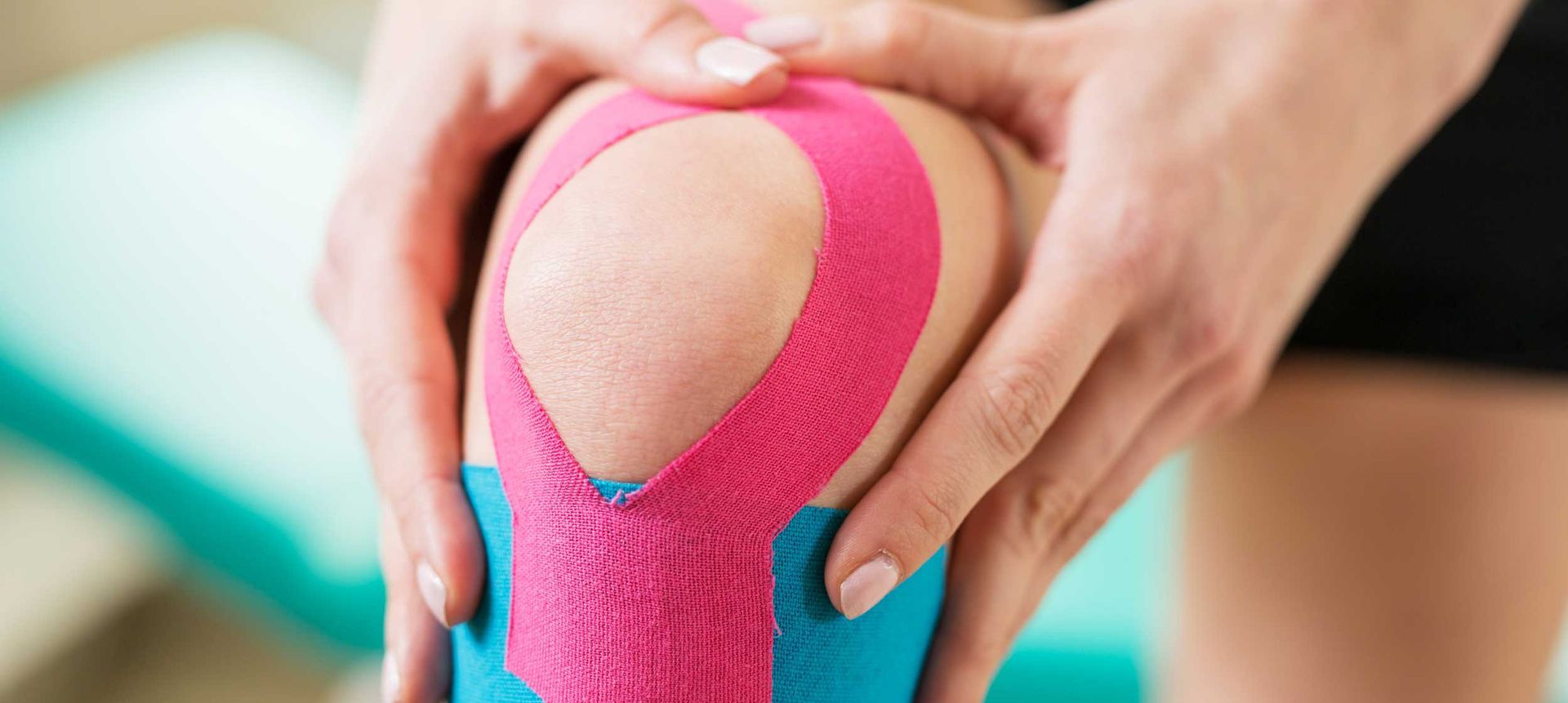
12 Feb, 2024
Did you make New Year’s resolutions to start working out and get fit? Do you want to get in shape for spring cleaning or summer fun? Have you noticed any knee pain or stiffness, popping around your kneecap, a giving way sensation when walking, squatting or climbing stairs? What about pain with kneeling, lifting or carrying? Women and girls often experience knee problems, especially knee pain and pain around the kneecap. Another common name for this is chondromalacia patellae. Anatomically, women may be more susceptible to knee problems than men because the female pelvis is wider than the male pelvis, increasing the angle from the hip to the knee. This is called the “Q angle,” and it can affect the angle between the knee joint and the lower leg. If the “Q angle” is large, there may be increased stress across the kneecap and the knee joint, resulting in knee pain, kneecap tracking and alignment problems. Women who are bowlegged or knock-kneed often have inner or outer knee pain, pain around the kneecap or cartilage injuries. Women also tend to have more ligament laxity in their joints than men, which may lead to a higher incidence of injuries like medical collateral ligament (MCL) and anterior cruciate ligament (ACL) strains or tears, especially in female athletes. Hormonal changes through the month can also play a role in the laxity of ligaments. Other contributing causes of knee pain include: Loose ankle and foot ligaments and joints Flat feet Muscle imbalances between the muscles on the front of the thigh and the back of the thigh Tight Achilles tendons Inflexibility of the calf muscles Physical therapy can alleviate or prevent knee pain in women and girls with the following interventions: Education in proper stretching of short, tight muscles Strengthening of weak muscles Functional activities to improve muscle performance and balance between muscle groups Proper warm up and cool down for exercise and sports Education in joint protection techniques and injury prevention for daily activities and sports Sport performance enhancement activities Foot orthotics to improve joint alignment and function Taping or bracing for functional activities or sports Basic stretching exercises that address the knee specifically and may offer immediate relief from pain or muscle soreness include: Quadriceps stretch for the front of the thigh and knee Hamstring stretch for the back of the thigh and knee Calf stretch for the back of the knee and lower leg To achieve the best benefit from stretching, a Palmer Physical Therapy for Women female physical therapist will help you move gradually into the position until a minimal to moderate pulling sensation is felt, and then stop and maintain that position without bouncing for 10-20 seconds. After a few seconds rest, the stretch will be repeated three or four times. Stretching with the physical therapist and at home on your own should not be forceful and should not cause pain. If you feel pain, you may be too aggressive with the stretch and need to back off the stretch. A few well-done stretches will give you better therapeutic benefit than many poorly done exercises. If you have knee pain or pain around the kneecap, you might be a candidate for physical therapy. A skilled female physical therapist at Palmer Physical Therapy for Women with expertise in working with women and female athletes can provide a comprehensive evaluation and assessment of your condition. Ann Sundgren, PT Palmer Physical Therapy for Women

12 Feb, 2024
The importance of being dense: Smart facts about osteoporosis Osteoporosis affects an estimated 28 million people, 80 percent of whom are women. Most people believe osteoporosis is a condition that just happens as you age, but it is a preventable bone disease. Prevention must begin early. By the time a woman is 20, she has acquired 90 percent of her total peak bone mass. The good news is that bones are made up of a dynamic, living substance – always in process of breaking down and rebuilding. The best defense against osteoporosis is to be dense, and being dense takes a smart woman. What is osteoporosis? Osteoporosis is a condition where there is less bone so the overall bone becomes more fragile, making it easier to break. When you have lost just some of the bone density, it is a condition called osteopenia – a precursor to osteoporosis – and it is important to discuss options to improve bone health before osteopenia progresses to osteoporosis. When you have only 75 percent of your peak bone mass, you will be diagnosed with osteoporosis. Where does osteoporosis affect the body? Bones in the spine usually show signs of osteoporosis first because vertebrae are mostly made up of trabecular, or “soft,” bone. Because we have so many activities and movement patterns bringing us into a forward bend, such as bending to pick something up off the floor, bending to load the dishwasher, improper form in squats, bending to stretch hamstrings in exercise and so many more patterns, our soft bone vertebra weaken and tend to collapse in the front, causing a “wedge” deformity of the spine. As the front portion of the vertebra collapse, your spine hunches forward, resulting in the common prominent hump in the midback known as the thoracic kyphosis, or “Dowager’s hump.” Other bones at risk for damage and fractures are bones in the wrists and hips. Pain most often associated with osteoporosis occurs when you suffer from a bone fracture. How to prevent osteoporosis: So, what do you do? Prevention is the best policy. Take care of children’s bone health by ensuring they have adequate calcium in their diets and they get plenty of exercise to promote bone growth and health. For adult women, it is important to advocate for your health with your health care providers, such as your primary care physician, to ensure you’re tested if you have risk factors for osteoporosis. Risk factors for osteoporosis include: Family history of osteoporosis Post-menopausal Smoking or excessive alcohol consumption Sedentary lifestyle Low calcium diet If you are diagnosed with osteopenia or osteoporosis, work with your doctor to determine if you need medication to treat the condition. Discuss calcium supplements or if any medications you’re currently taking are contributing to you condition. Adequate calcium intake through calcium-rich foods is the best supplement, but, as an insurance policy, you should take a calcium supplement regularly. Women over the age of 65 or who are post-menopausal should take 1,500 milligrams of calcium daily. Another important aspect of managing osteopenia or osteoporosis is exercise. Not all types of exercise are appropriate to treat osteoporosis. Remember how the spine tends to fold forward? Proper exercises stretch tight muscles in the front of your trunk (flexors) and strengthen muscles in the back of your trunk (extensors). A qualified female physical therapist at Palmer Physical Therapy for Women can assess your posture and create an exercise program to address the specific areas that you need to correct your posture. Weighted exercise stimulates bones to increase bone building and is an important part of your exercise program to treat osteoporosis. Resistance training, or weighted exercises, is recommended twice a week. There are two ways to incorporate resistance exercises into your program: Weight lifting with free weights or machines with progressive weight resistance Resistance bands, which use your body weight to stimulate the muscle-tendon pulling on the bone Start with a weight you can lift with a little effort, and complete two sets of 10 repetitions. Increase your repetitions slowly, and then try to add more weight every other week. Listen to your body and be consistent with your program. Walking, or other weight-bearing, low-impact exercises, also provides the necessary stimulus to promote bone building. Walking should be done four or five times a week for the best results, with the goal of 30 minutes at a time. However, respect your body, and start walking at an appropriate level. For sedentary or deconditioned women, the appropriate level might be starting with 15-20 minutes at a time. In addition to managing your condition with exercise, you should also ensure your home and work places are free of fall hazards to prevent the risk of fractures. Remove throw rugs or cords stretched across walking areas and have adequate lighting. Improving your balance through appropriate exercises is also important to fall prevention. Remember, the key to keeping up with your exercise is to keep it interesting. Try a low-impact dance class or go trail walking with a friend. To be successful, you must stick with your program for the long haul. Properly managing osteopenia and osteoporosis is about getting all the facts. You need a balanced diet, regular exercise and proper medical management. If you don’t know where to start, ask your doctor to refer you to Palmer Physical Therapy for Women where a female physical therapist with experience treating women with osteopenia and osteoporosis can help set up your treatment program. Palmer Physical Therapy for Women

06 Feb, 2024
The transition from pregnancy to motherhood can be one of the most joyous transformations in a woman’s life, but various health issues resulting from pregnancy, labor and delivery can create challenges for new mothers while caring for her baby. Pelvic pain, neck and low back pain and urinary incontinence after pregnancy puts physical limitation on new moms, some intense enough that women are unable to accomplish normal daily routines. Plus, moms tend to place the maintenance of their own health far down on the list of priorities. Physical limitations new moms experience after labor and delivery include: More than 60 percent of women will have separation of their abdominal muscles, called diastasis recti, which leads to abdominal instability More than 50 percent of women will experience urinary incontinence 40 percent of women will have an episiotomy, which may cause painful scarring and weakness of pelvic floor muscles 25 percent will give birth via Cesarean section, which can lead to increased pain and dysfunction 10 percent of women will experience fecal incontinence Physical therapy can impact women’s health and wellness after labor and delivery significantly. In Australia and in a few cities in the United States, physical therapists assess a woman within 24 hours of the delivery. A treatment program is developed immediately, which includes basic exercise. Additional physical therapy exercises begin on an out-patient basis after she leaves the hospital. Exercise after labor and delivery leads to: Increased weight loss – an average of 8.6 pounds Improved muscle tone Improvement or elimination of urinary incontinence Increased abdominal strength, making the trunk more stable Reduction or elimination of low back pain Increased energy Significant decrease in anxiety, depression and mood disturbances Why should pregnant women and new mothers have physical therapy? Physical Therapy for the Pelvic Floor Damage to pelvic floor muscles during delivery can cause immediate and lifelong problems for a woman, including urine leakage due to weakened and strained muscles. Painful intercourse can result from an episiotomy, and severe tearing can lead to fecal incontinence, especially if the cut is deep. If the pelvic floor never fully recovers from the stretch and strain of labor and delivery, a woman is more likely to experience urinary incontinence and a “falling” of her uterus, bladder and rectum later in life. Exercising pelvic floor muscles helps them regain full function after labor and delivery – just like exercising leg muscles is needed to rehabilitate after a knee injury. Exercises include performing Kegels, but more than half of women perform Kegel exercises incorrectly with the most common mistake being pushing the pelvic floor down instead of pulling it in and up. Difficulty identifying the proper muscles is also an issue for many women. A Palmer Physical Therapy for Women female physical therapist can help a new mom regain full pelvic floor muscle strength and function. Physical therapy success rates for reducing or eliminating urinary incontinence, painful intercourse and overall pelvic pain are high. Physical Therapy for Low Back Pain Many women experience low back pain during pregnancy and after labor and delivery. Low back pain increases as a new mom begins to care for her baby from stress placed on the back through repetitive bending to lift the infant, frequent diaper changes and transporting the baby and equipment in and out of a vehicle. Breastfeeding can also cause neck and low back pain from hunching over the infant during feedings. If the pain is not addressed, women will continue to suffer from chronic pain episodes later in life. Physical therapy can treat neck and low back pain and provide instruction for women on correct bending and lifting techniques with the baby to reduce strain on the low back. There are also positioning techniques to use while breastfeeding to avoid pain. Learning to prevent back pain will be a lifelong benefit for new moms. Physical Therapy and Weight Management Weight loss and management is often a concern after labor and delivery. A Palmer Physical Therapy for Women female physical therapist can help new moms create exercise programs, often incorporating the infant in the workout, to strengthen core muscles, including abdominal muscles. A woman’s body undergoes significant changes during pregnancy and after labor and delivery. Muscles are stretched and weakened; the pelvis and its muscles are strained. Physical therapy can help new moms return to her pre-pregnancy physical state and prevent future pain and problems that may not present immediately after labor and delivery.
Proven results,
best outcomes for your money.
Palmer Physical Therapy for Women
10333 E. 21st N. #406 | Wichita, KS 67206
Phone: 316-630-9944